Cranberry Brie Bites
Thaw 1 (17-ounce) box frozen puff pastry (2 sheets) according to package directions. Heat oven to 400ºF. Lightly coat a mini muffin tin with cooking spray. Cut 6 ounces Brie cheese into 1-inch cubes. Refrigerate while you prepare puff pastry.
Unfold each puff pastry sheet and cut into 9 squares (18 squares total). Press each into a mini muffin tin well. Add 1 Brie cheese cube to each well. Top with 1/2 cup cranberry sauce or chutney (1 teaspoon per well) and 1/4 cup chopped walnuts (1/2 teaspoon per well). Bake until puffed and lightly browned, 18 to 20 minutes. Cool 5 minutes.
Get the full recipe: Cranberry Brie Bites
Reading
Some sentences are true (T) according to the text, some sentences are false (F) and some information (ni) is not given in the text. Try to decide.
How the Sandwich Came to the World
In 1762, there was a very famous English politician. Everybody knew about him because he enjoyed playing cards very much. One night he stayed at the card table for 24 hours. And he ate nothing but slices of bread with pieces of meat inside. His name was John Sandwich. The English name for a sandwich comes from this man.
Sandwiches were great favourites in Victorian England. It was the custom to “take” afternoon tea at about four o’clock. Many rich families ate sandwiches at that time.
Cucumber sandwiches were very popular. The servants always cut the edge of the bread, so the sandwiches were very small and delicate.
Sandwiches are less elegant now and often much bigger.
The English eat millions of sandwiches every day. They are a typical “snack” meal because they are easy and quick to prepare. You can buy sandwiches if you don’t want to make them yourself. There are thousands of “sandwiches bars” and cafés and even some restaurants that sell them.
Sandwich is the name of a person.
A well-known politician invented sandwiches.
His hobby was playing cards
He ate sandwiches every day
His wife liked sandwiches, too.
In Victorian English families ate sandwiches during the tea time.
Sandwiches are smaller now than they were before.
If you can’t make sandwiches, you can buy them.
Sandwiches are easy to cook
Sandwiches can be hot.

Clerk: Hi, can I help you?
Leticia: Hi. I’m trying To make up my mind about which kind of Dessert to get. Everything in the Case looks delicious.
Clerk: Thanks. As you can see, we have a lot of different types of Cookies, brownies, cakes, and Muffins over here.
Leticia: Ooh, that cake looks wonderful. How many people does it serve?
Clerk: This one? It has three Layers, and it serves between eight and 10 people, depending on how you Slice it. If you like chocolate, you may like this one over here with the Frosting and Sprinkles.
Leticia: Oh, that looks good, too. Hmm. It’s so hard to decide. Why don’t I take the layer cake, and I’d like a dozen of these cookies, too.
Clerk: Our cookies, muffins, and Scones always come in Baker’s dozens. Can I get you anything else?
Leticia: I think I’d like a bag of those Biscotti, too.
Clerk: Sure, no problem. Would you like the cookies and biscotti in the same box as the cake?
Leticia: No. Please put them in separate boxes, If you don’t mind.
Clerk: Not at all. Here you are.
Leticia: Thanks. We’ll be having an Overload of Sugar for the next few days!
Task2
Write your dialogue.
At the baker's shop.
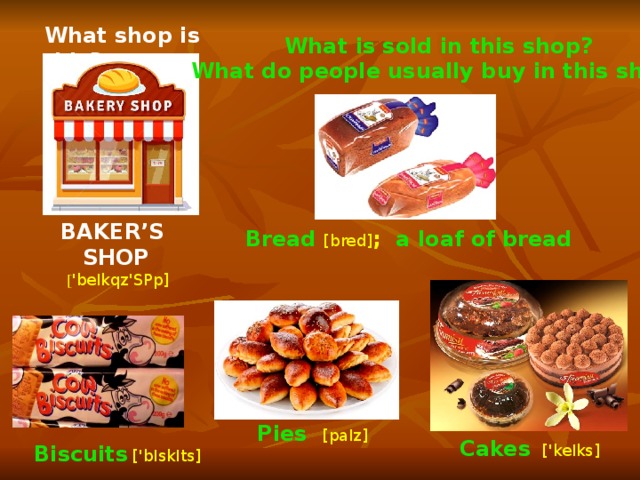
Task1
Read the information summerize the information in your copybooks.
A bakery is an establishment that produces and sells flour-based food baked in an oven such as bread, cookies, cakes, pastries, and pies. Some retail bakeries are also categorized as cafés, serving coffee and tea to customers who wish to consume the baked goods on the premises. Confectionery items are also made in most bakeries throughout the world.
Some bakeries provide services for special occasions (such as weddings, anniversaries, birthday parties, business networking events, etc.) or customized baked products for people who have allergies or sensitivities to certain foods (such as nuts, peanuts, dairy or gluten, etc.). Bakeries can provide a wide range of cake designs such as sheet cakes, layer cakes, wedding cakes, tiered cakes, etc. Other bakeries may specialize in traditional or hand-made types of baked products made with locally milled flour, without flour bleaching agents or flour treatment agents, baking what is sometimes referred to as artisan bread.
Grocery stores and supermarkets, in many countries, sell prepackaged or pre-sliced bread, cakes, and other pastries. They may also offer in-store baking and basic cake decoration. Nonetheless, many people still prefer to get their baked goods from a small artisanal bakery, either out of tradition, the availability of a greater variety of baked products, or due to the higher quality products characteristic of the trade of baking.
How to make a cake decoration
Watch video
Famous Cakes from Around the World
Celebrating happy occasions such as birthdays or weddings without a cake would be hard to imagine. Cakes are delicious desserts, typically consisting of a baked mixture of flour, eggs, and milk, and made tastier with chocolate, fruit, or whipped cream.
There must be thousands of cake variations, as people around the world found different ways to add something new and special to this dessert. Some cakes, however, are more famous than the places they came from or the people who invented them.
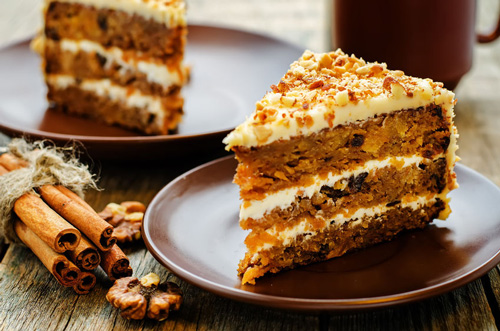
A Brief History of Cakes
- The English word "cake" derives from the Old Norse word for cake, which is kaka.
- The ancient Greeks enjoyed several cakes. They invented cheesecake, a sweet pastry with goat's milk.
- Ancient Romans added honey and butter to the basic bread dough to make a cake-like baked good.
- In the 17th century, cake molds (containers that gives a cake its shape) were invented. Cakes began to be beautifully decorated and presented at large banquets.
- During the Great Depression (a serious economic crisis in the United States in the 1930s), the cake mix was invented to provide cheap food to people. These cake mixes, which include all the dry ingredients (such as flour or cocoa) needed to make a cake, have made baking cakes easy and accessible to all.
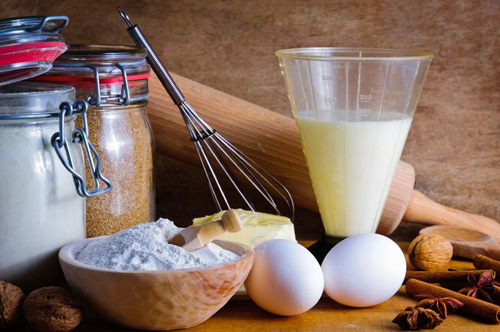
Pavlova, New Zealand and Australia
Pavlova is a cake made of a meringue (whipped egg whites with sugar) crust, whipped cream, and delicious fresh fruits like strawberries or kiwis.
The cake was named after Anna Matveyevna Pavlova, a Russian ballerina who performed in the early 20th century. In 1926 and 1929, Anna Pavlova toured around Australia and New Zealand, and the two nations usually disagree about who invented the cake.
One version of the story suggests that a hotel chef in Wellington, the capital of New Zealand, came up with the cake while Anna was on tour. Others claim that the same recipe appeared in an Australian cookbook in 1926.
No matter what the truth is, the Pav, as people in New Zealand and Australia call it, is traditionally served on warm Christmas days in these two countries.
Red Velvet, United States
The Red Velvet cake was invented in the United States. It was first brought in the 1930s by a company which was one of the first to start selling red food coloring. During World War II, food was rationed, so some bakers started using beet (a root vegetable) juice to make their cakes look red.
The cake itself is made with simple ingredients: cocoa and white cream cheese icing or frosting spread between cake layers.
Although red dye is commonly used for this cake, what originally made it red was the non-processed natural cocoa.
Nowadays, the cake has become increasingly popular. There are even separate bakeries devoted to this cake! In the U.S., it is usually served on Valentine' Day, popularly celebrated as the day of love and romance.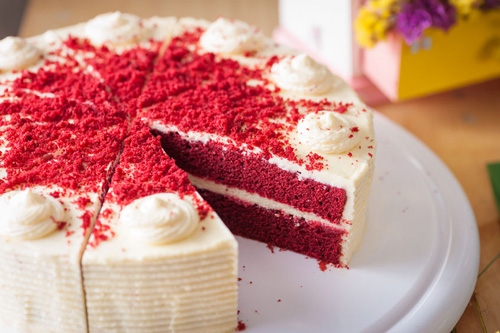
Dobosh, Hungary
It is well-known that Hungarians make delicious cakes, and the Dobosh cake is the most famous of all.
It has five layers of chocolate cream and delicious caramel on top. A Hungarian confectioner called Jozsef C. Dobos created this cake at the time when keeping food refrigerated was not easy. For this reason, Mr. Dobos was looking to make a cake that would last longer than other cakes, which is why he added the caramel topping to prevent the cake from becoming dry.
In 1885, the cake was shared with the world at the National General Exhibition in the capital city of Budapest. King Franz Joseph, who was King of Hungary at the time, and his wife Queen Elisabeth, were the first ones to try it. Because it looked so elegant with its shiny caramel top, the cake was an instant hit.

Black Forest Cake, Germany
The Black Forest cake is a German specialty. This cake consists of several layers of chocolate cake, whipped cream, and cherries. More traditional recipes suggest that kirschwasser (cherry liquor) should also be added to the cake, but this is sometimes replaced with rum or simply made without any alcohol.
The liquor and the cake both come from the same region in Germany known as Schwarzwalder, or the Black Forest mountain range. The first written record about the cake appeared in 1934, suggesting that the Black Forest Cake was available in high-class patisseries in Germany, Austria, and Switzerland.
Today, there have even been several competitions in making the largest Black Forest Cake. In 2006, a bakery managed to make one which weighed over 6,600 pounds (3,000 kg) and used 5,600 eggs!

Sacher Cake, Austria
When in Vienna, having a slice of the Sacher cake is inevitable. This unique cake is made of chocolate cake layers with apricot jam in between. Although similar recipes had existed before, this cake was invented in 1832. At that time, Prince Wenzel von Metternich, the State Chancellor of the Austrian Empire, asked his personal chef to create a special cake for his guests.
However, the chef fell ill, so he left his 16-year-old apprentice to do the work. The apprentice, called Franz Sacher, made a cake and the guests loved it.
The cake became famous much later, when Sacher's son perfected his father's recipe and opened his own hotel. Since then, the Viennese have had a long coffeehouse tradition where they relax with a cup of coffee and a slice of a freshly baked Sacher cake.

Task
Comprehension Exercises
Vocabulary Questions
- What does "on tour" mean?
- to turn around several times
- to perform around the world
- to be in a really good mood
- What does "confectioner" mean?
- someone who owns a hotel
- someone who makes clothes
- someone who makes sweets
- What does "banquet" mean?
- a room in a castle
- a formal evening party
- a type of dress
- What does "apprentice" mean?
- someone who is learning a skill from a professional
- someone who makes great cakes
- someone who is very annoying
- What does "hit" mean?
- very popular, successful
- unusual, strange
- violent, aggressive
Collocation Questions
- The Black Forest cake was named after a mountain ___________.
- span
- realm
- range
- The ancient Romans, too, made cake-like baked ___________.
- goods
- objects
- items
- A chef in Wellington came ___________ with the recipe for the Pavlova cake.
- in
- of
- up
- In World War II, food was ___________.
- proportioned
- rationed
- quantified
- One of the main ingredients of the Red Velvet cake is red ___________.
- pigment
- dye
- color
- The Dobosh cake was ___________ hit.
- an instant
- a speedy
- a prompt
- In the 1930s, the Black Forest cake was served in ___________ patisseries.
- first-rate
- high-class
- superior
- Prince von Metternich asked his ___________ chef to make a special cake.
- private
- individual
- personal
- The chef ___________ ill, so he couldn't make the cake.
- fell
- collapsed
- turned
- Sacher's son ___________ his father's recipe.
- polished
- perfected
- brushed up
Wh Questions
- Which cake has apricot jam as one of the ingredients?
- Pavlova
- Dobosh
- Sacher
- When is the Red Velvet cake usually served?
- on Christmas
- at weddings
- on St. Valentine's Day
- Where does the Black Forest cake come from?
- Switzerland
- Germany
- Austria
- Why did the Dobosh cake instantly become popular?
- because it looked elegant
- because the royal family liked it
- because Hungary won a war
- How is meringue made?
- from non-processed cocoa
- from whipped egg whites and sugar
- from whipped egg yolks and sugar
Evaluating Statements
- Based on the information in this lesson, which statement is true?
- Anna Pavlova inspired the Pavlova cake while she was on tour.
- Anna Pavlova made the Pavlova cake while she was on tour.
- Based on the information in this lesson, which statement is false?
- The cake mix was invented in Egypt.
- The cake mix is an American invention.
True or False?
- Based on the information in this lesson, is the following statement true or false?
"Franz Sacher was an experienced chef when he made the Sacher cake." - True
- False
- Based on the information in this lesson, is the following statement true or false?
"In the past, beet juice was one of the ingredients of the Red Velvet cake." - True
- False







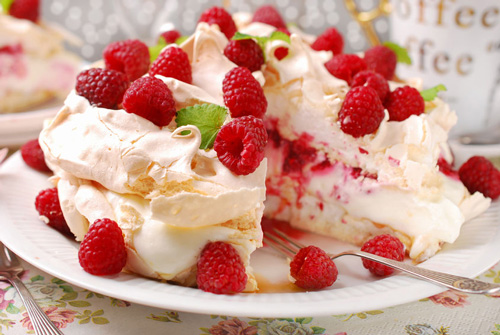







No comments:
Post a Comment